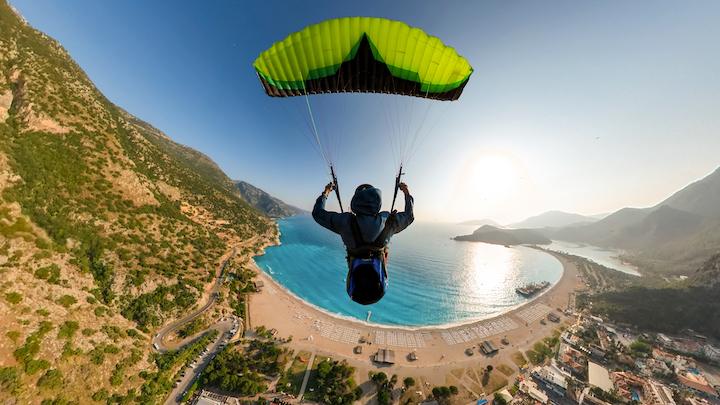Women in technology at Energy-Breakthrough in Maryborough, Australia
From 19th–22nd November 2015 it was a great privilege to help support the all girls Marist Sisters’ College Woolwich “Design and Technology” class compete in the 25th Annual Energy-Breakthrough Designers Challenge in the small town of Maryborough Victoria, Australia; three hours bus ride from Melbourne, plus a one and a half hour flight from Sydney, where our ANZ HQ is located.
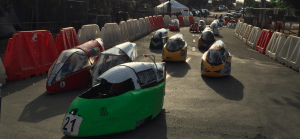
With a daughter in the competition, I wanted to help out where I could without impacting areas they were judged on (camp setup/break down, cooking and moral support). I was able to provide a small sponsorship from Certinia.com, buying the required halogen headlights for the two recumbent trikes competing in the 24 hour Enduro race.
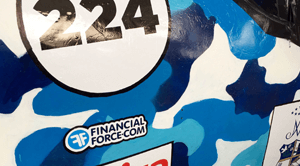
This is the 6th year the College has competed and two teams were fielded in the Energy Efficient Vehicle (EEV) division. Not only did the girls have to adhere to the sustainability criteria, but needed to design and build an energy-efficient vehicle to withstand the 24 hour endurance race covering 650+ kilometres allowing for all conditions.
With over 350 schools from all over Australia contesting this division, our girls’ two teams made up 1/2 of the only 100% all girls teams that competed (that includes the riders and full pit crew), and the competition starts with scrutineering, where vehicles are put through their paces and tested for safety and function as well as overall design in adherence with race rules. Judges noted that the girls two trikes were some of the most well constructed in the field. Next came Design & Construction where teams present on the design and functionality of the trikes and how they increased their efficiency.

Throughout each stage, the girls were challenged and tested by the judges to explain how this event was important to the new designers of the world. The passion and dedication impressed the judges who heaped praise on the girls for all they had managed to achieve on their own as a team with minimal supervision and funding, a huge feat considering the number of schools with professional sponsorships.
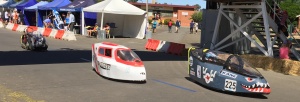
The two trikes finished 14th and 20th overall out of 189 vehicles and their lead trike was only just pipped at the post to come 4th in their class division of 39 vehicles. While both trikes sustained scrapes and damage to the kevlar shells and one trike lost part of its perspex canopy when it rolled (each trike rolled numerous times, with none of the girls sustaining scrapes or injuries), the fact that both trikes completed the 24 hour, 650+ kilometre race intact was testament to the girls design capabilities.

At the final end of race presentation their lead trike won the award for the best Design and Construction; a huge achievement. The girls were overjoyed and stunned – the names they chose for their two trikes were very appropriate; WOW and WOW+, where WOW stands for “Women of Wisdom”.
- The two trikes were 100% designed and constructed by the girls in class and after school
- This involved the design, welding and assembling the chromoly tube frames – the chromoly tube roll cages were welded under tension so that any impact/breakage would cause the tubes to force pressure outwards.
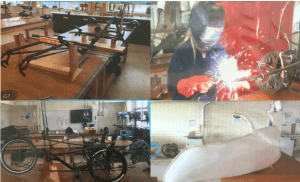
- The kevlar shells for the trikes were designed and built by the girls in class from a mould designed and built by themselves using leftover kevlar donated by the local Woolwich boatyard from hull work from a famous Sydney-Hobart super-maxi yacht. Minor clever features such as a rider operated electric water pump for the riders to drink tube water supply.
- A training roller-wheel stand designed by one of the team captains, allowing the trikes to be rider tested and operated up to full speed (a design that has since been adapted and adopted by the professional sponsored teams).
- Funding available to the girls was less than $2k, which meant most of the material for the trikes was recycled from various sources.
- Testament to the girls’ capability was at 6am on the Sunday (17 hours into the 24 hour race) seeing the Design & Technology teacher David cooking pancakes in the pit area while the girls managed the pit changes; swapping riders and ensuring the trikes were okay to keep going.
It was truly impressive to see what the girls accomplished by working tirelessly in class, after school and on weekends to achieve full realisation of their designs. The level of professionalism shown throughout the event would turn the heads of many professional racing teams in any category.
To see what the fuss is all about, check out the video below to see one of the girls do a “hot lap” of the course in the final hours of the race on Sunday. The whistling sound you can hear is the “horn” to alert other riders that you are overtaking. The backup battery power is only used to build up speed coming out of the coners (see if you can figure out which of the other trikes is petrol/rider powered or 100% rider powered).
https://www.youtube.com/watch?v=VwjC09NgdjM&feature=youtu.be



